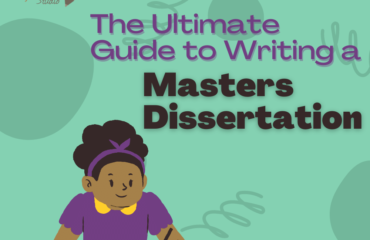
Table of Contents
What is Literature Review?
A literature review is an assessment of scholarly materials on a particular topic. It gives an overview of current knowledge, helping you to find relevant ideas, methodologies, and research gaps. A literature review has four main objectives:
- Literature review surveys the literature in your chosen area of study.
- It synthesises the information in that literature into a summary
- It critically analyses the information gathered by identifying gaps in current knowledge
- It presents the literature in an organised way.
A literature review aims to demonstrate to your readers that you have a thorough understanding of your subject and that you understand how your study contributes to an existing body of agreed knowledge.
Why Write a Literature Review?
In a large piece of work, such as a dissertation, a literature review usually comes after deciding on a topic. The aim is to help refine a topic and frame a research question by reading and critically analysing the material. A literature review provides knowledge and understanding of currently available research in a particular field before carrying out a new investigation. It enables you to identify what is still unknown about your topic. Components of the Literature Review. The basic components of a literature review include:
Background/Introduction: Overview of your research topic and why you are doing your research on it.
Methods: Describe how you performed your evaluation of the materials step by step.
Discussion: Discuss and compare the common themes and gaps in the literature.
Need Assistance with your Dissertation topic Masters Dissertation Literature Review?
Dissertations have the power to make or break your future career. So, hand in your dissertation to our subject-matter experts and expect them to craft an original, well-researched and top-notch dissertation.
How Long Should a Literature Review of a Masters Dissertation be?
There is no set length for a literature review. Usually, the length depends on your area of study. However, generally, I have found out that the length of a literature review should be between 20% and 40% of the total project. Don’t panic if your literature review is shorter than that. Just ask yourself if there is any other relevant research that you may have not explored yet or if you haven’t discussed the information you have explored in detail.
Step by Step Approach to Drafting your Literature Review
Once you get the hang of it, it won’t look as hard as it does right now, so just follow these steps and in no time you will have a great literature review that will become the star of your research.
Step 1: Look for relevant literature
Before you start searching for relevant literature, you need to have a clearly defined topic. The literature should be related to your research objectives and questions. You can search appropriate databases using keywords, make a list of keywords that are related to your topic as it is very easy to lose focus while searching on the internet, and use them to collect sources for your literature review. What will happen after you make use of keywords is that you will find new keywords to search for and the articles you come across can lead you to another article related to what you are studying. Read the abstract to see if the article is relevant to your research question or not and if it is, then check its bibliography to find more relevant sources. Some of the relevant databases where you can search for sources are:
- Your university’s library catalogue
- Google Scholar
- JSTOR
- EBSCO
- Project Muse(humanities and social sciences)
- Medline(life sciences and biomedicine)
- EconLit(economics)
- Inspec(physics, engineering and computer science)
Step 2: Evaluate and Select Sources
There will surely be more sources than you can ever read, what will have to do is evaluate which sources are the most relevant to your questions. Go through all the text that you have selected to get a general idea of their content and argument. This will help you choose which sources you mainly want to focus on. Then after this, you can take a more in-depth look at your sources. Make sure to take a lot of notes, be critical, ask questions and write any comments that you may have regarding the methodological approach or your academic opinion on the text. This way you will be able to ensure that your literature review is not merely a summary of your sources. (Note: Be always mindful that you are only using sources that are credible and authentic.)
Step 3: Identify Gaps in the Research
It is important to consider the research gaps when writing a dissertation literature review. Well, first, in order to identify the gap, you have to know what “gap” is. A literature gap, also known as a research gap, is a question or problem that has not been addressed or explored by existing studies or research in your field. The first step to finding gaps is to thoroughly read the breadth of literature. Your goal is to find a space or an opening for contributing to new research. Apart from a study of the existing literature, you may be able to identify research gaps based on your own analysis of the problem and existing literature.
Identifying the gaps in your research is essential for the originality of your research, it proves that you are not simply recounting existing research. It also demonstrates the amount of effort you put into your review by showing how aware you are of the status of the literature in your chosen field of study. One more important thing that you should remember before we start with the review structure is that in order to steer clear of any plagiarism, accidental or not, you should start citing sources.
Step 4: Use literature review sample
Look for dissertation literature reviews in the field of your study and read them thoroughly in order to familiarise yourself with key findings and debates. This can be a good point for framing and structuring your own review. Going through samples will give you an idea of what is expected in this regard. So pay close attention to everything! From the academic language that is being used to write it to structure.
It is not necessary but a personal discovery I made while working on my master’s dissertation Literature review and going about it this way helped me a lot. To me, samples of any assignment you need to do are very important, knowing how something should be written takes half of the stress out of the problem. So, make sure to look for literature review samples when you start writing your review.
How to Write Your Literature Review
Now that you are prepared, it is time to start writing your review. A literature review should be structured like any other essay: it should include an introduction, a middle or main body and a conclusion.
Introduction
Just like any good introduction, the introduction of your review should introduce the purpose and layout of the chapter. In simpler words, you will give a taste to the reader of what will come next and how you will lay it all out.
Your introduction should outline your topics and provide a clear picture of the scope of your review. Below you will find the general guidelines for the introduction structure of a literature review:
- Give a broad introduction to the topic. Include relevant background information, definitions, or explanation of the main terms and concepts and also what you will and won’t be covering (scope of your review)
- Explain the importance of your topic and prove it with evidence that is relevant to your study.
- Describe to your reader the aim or purpose behind your review. This part is often included at the end of an introduction.
The introduction of your review can convey to your examiners that you are well aware of how your research connects to the existing material in the area of the study.

Body
In this part, you review the literature that is relevant to your research or aim. The body of the review should be structured in a coherent and logical order. Consider what your sub-topics or sections will be. Then consider the most logical way or how you will organise and discuss your sections. A good body of a literature review can be structured according to these methods.
Chronological
Chronological is the simplest way to structure your literature review. You will start with the information in the order in which it was published, you will start with the information that was published first and then work your way through until you reach the work that was published recently.
This approach is the simplest because it makes it easy to discuss the developments in the field as they emerge over time. It also allows you to discuss how an article or a piece of work contributed to the field or inspired some changes in the field. Therefore, this approach is useful when you aim to understand how a topic unfolded over time.
Thematic
This approach, unlike chronological, mainly focuses on a topic or issue rather than how development over time and events. As you have been collecting and evaluating literature, you surely will realise that some themes or patterns keep emerging. Then you can use these themes and patterns to structure the discussion of the body. Thematic is the most common approach and it can be used in most fields.
Methodological
In a methodological approach, you can draw sources from different fields that use a variety of research methods and compare the crucial findings, gatherings and outcomes that emerge from different approaches. For example: You can compare the results that emerge from qualitative and quantitative research.
Theoretical
A literature review is frequently used to lay the foundation for a theoretical framework. It may be used to explain various theories, models, and important concept definitions. You may argue about the importance of a certain theoretical approach, or you could mix several theoretical concepts to build a framework for your study.
Conclusion
And now is the time to wrap up your literature review. The conclusion is where you will pull up all the pieces together that will set the direction for the rest of your dissertation. It is where you will present the key findings of your literature review and the gaps that exist in the literature. And you will justify the reason behind your own research by showing how it fills one or more gaps that you encountered. And that’s it! The process may seem a little complex, but don’t worry. you will get the hang of it when you start working on your literature paper. Just remember to read a lot and find sources that are relevant and authentic and do it one step at a time!






